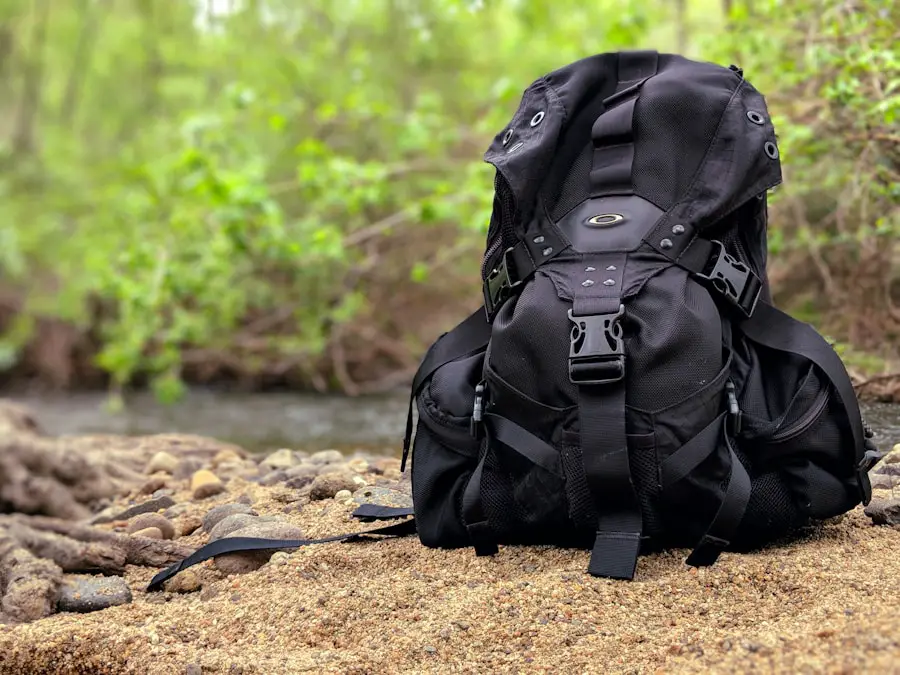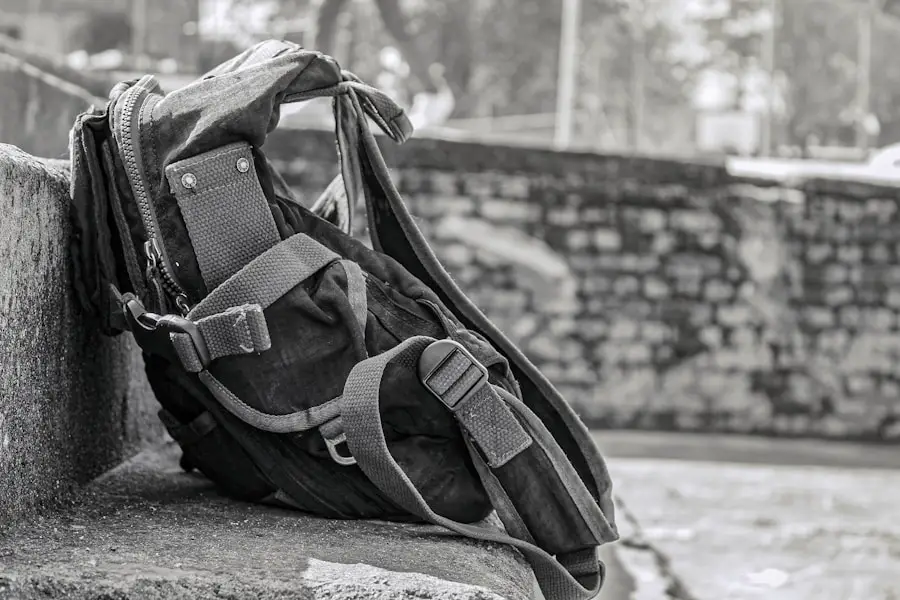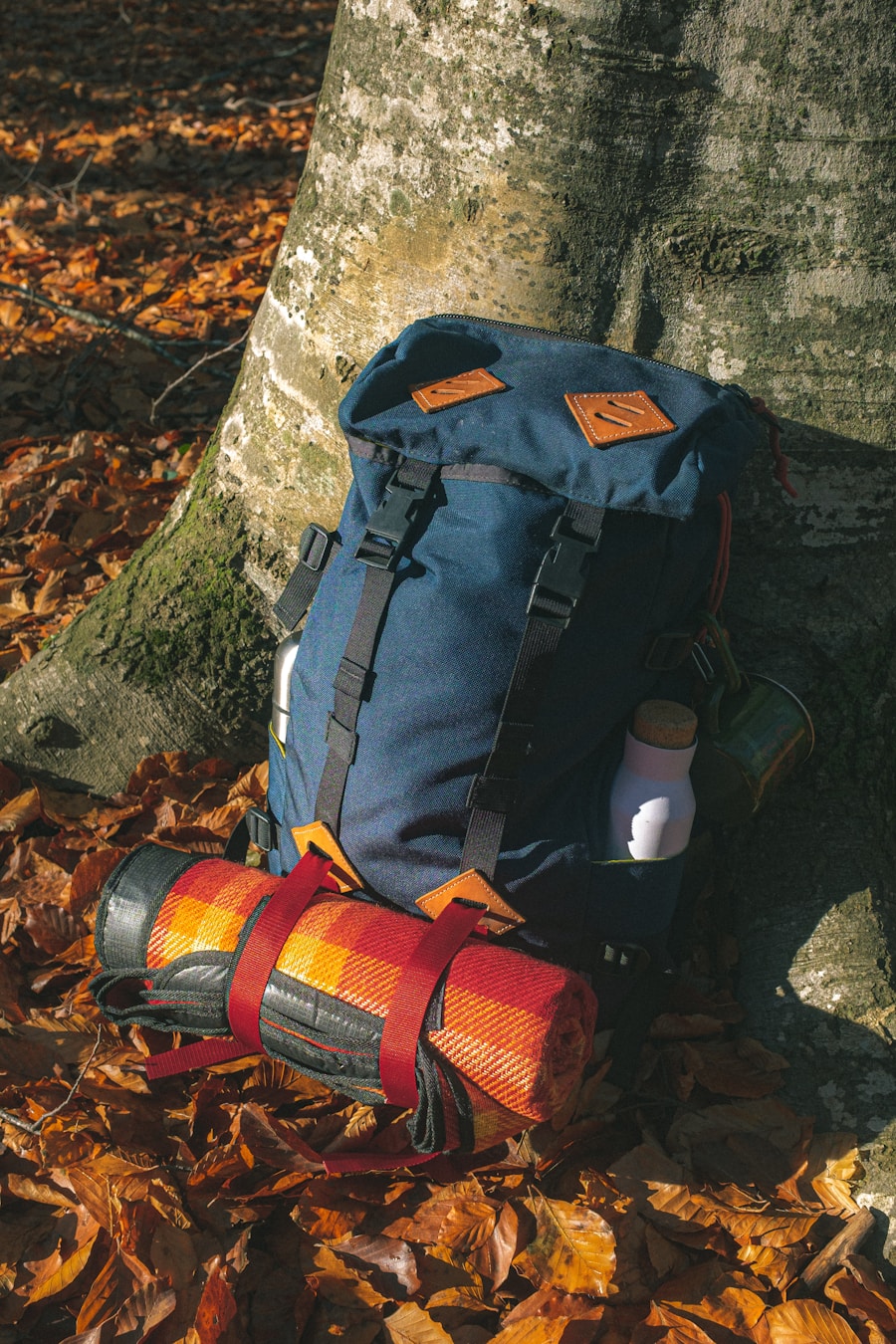Maintaining a clean hiking backpack is essential for several reasons, ranging from hygiene to functionality. A dirty backpack can harbor bacteria, mold, and unpleasant odors, which can be detrimental to your health, especially during long hikes or multi-day trips. When you’re out in nature, the last thing you want is to deal with the consequences of neglecting your gear.
A clean backpack not only ensures that you are carrying your essentials in a hygienic environment but also contributes to your overall comfort on the trail. Moreover, a well-maintained backpack can significantly enhance its longevity. Hiking backpacks are often subjected to harsh conditions, including rain, mud, and dust.
Over time, accumulated dirt and grime can wear down the fabric and zippers, leading to premature wear and tear. By regularly cleaning your backpack, you can prevent these issues and ensure that your gear remains in optimal condition for years to come. This proactive approach not only saves you money in the long run but also enhances your hiking experience by ensuring that your equipment functions as intended.
Key Takeaways
- Keeping your hiking backpack clean is important for prolonging its lifespan and preventing the growth of bacteria and mold.
- To clean your hiking backpack, use mild soap, a soft brush, and a cloth for spot cleaning.
- You will also need a bathtub or large sink, warm water, and a well-ventilated area for drying.
- When cleaning the exterior of your backpack, focus on removing dirt, stains, and mildew using gentle scrubbing and rinsing.
- To clean the interior of your backpack, empty all pockets, vacuum out debris, and spot clean any stains with a mild soap solution.
Tips for Cleaning Your Hiking Backpack
Cleaning your hiking backpack requires a thoughtful approach to ensure that you do not damage any of its components. One of the first tips is to always check the manufacturer’s care instructions before proceeding with any cleaning method. Different materials may require specific cleaning techniques or products, and adhering to these guidelines will help maintain the integrity of your backpack.
For instance, some backpacks are made from water-resistant materials that may not respond well to certain detergents or excessive scrubbing. Another important tip is to clean your backpack regularly, rather than waiting until it is heavily soiled. After each hike, take a moment to inspect your backpack for dirt, stains, or odors.
Spot cleaning any visible marks with a damp cloth can prevent them from setting in and becoming more difficult to remove later. Additionally, consider using a gentle brush or cloth to remove any loose dirt or debris before performing a more thorough cleaning. This routine maintenance can save you time and effort in the long run.
Tools and Supplies Needed for Cleaning

To effectively clean your hiking backpack, it is essential to gather the right tools and supplies beforehand. A soft-bristled brush is invaluable for removing dirt and debris from the fabric without causing damage. Additionally, a sponge or microfiber cloth can be used for spot cleaning and wiping down surfaces.
For more thorough cleaning, a bucket or basin filled with warm water will be necessary for soaking and rinsing. When it comes to cleaning solutions, opt for mild detergents specifically designed for outdoor gear or fabrics. Harsh chemicals can degrade the materials of your backpack, so it’s best to avoid bleach or strong solvents.
If you prefer a more natural approach, a mixture of vinegar and water can serve as an effective cleaning agent for eliminating odors and stains. Lastly, having a towel on hand for drying purposes will help you finish the cleaning process efficiently.
Cleaning the Exterior of Your Hiking Backpack
| Steps | Frequency |
|---|---|
| Remove dirt and debris with a brush | After every hike |
| Spot clean stains with mild soap and water | As needed |
| Hand wash with gentle detergent | Every 3-6 months |
| Thoroughly dry before storing | After every cleaning |
The exterior of your hiking backpack is often exposed to the elements, making it crucial to keep it clean and free from dirt and grime. Start by removing any detachable components such as straps or pockets if applicable. This will allow you to access all areas of the backpack more easily.
Use a soft-bristled brush to gently scrub away any loose dirt or mud from the surface. Pay special attention to seams and crevices where dirt tends to accumulate. Once you have removed the surface debris, fill a basin with warm water and add a small amount of mild detergent.
Submerge a sponge or cloth into the soapy water and begin wiping down the exterior of the backpack. For stubborn stains, let the soapy water sit on the affected area for a few minutes before scrubbing gently with the brush. After thoroughly cleaning the exterior, rinse it with clean water to remove any soap residue.
It’s important to ensure that no detergent remains on the fabric, as this can attract dirt in the future.
Cleaning the Interior of Your Hiking Backpack
The interior of your hiking backpack is just as important as the exterior when it comes to cleanliness. Over time, crumbs, dirt, and moisture can accumulate inside, creating an uninviting environment for your gear. Begin by emptying all compartments and pockets of your backpack, ensuring that you check every nook and cranny for hidden debris.
Once emptied, use a vacuum cleaner with a hose attachment to remove loose dirt and particles from the interior lining. After vacuuming, prepare a solution of warm water mixed with mild detergent. Dampen a cloth or sponge in this solution and wipe down all interior surfaces thoroughly.
Be sure to pay attention to areas that may have come into contact with food or liquids, as these spots are prone to odors and stains. If your backpack has removable liners or pockets, consider washing them separately according to their care instructions. Once you have cleaned the interior surfaces, allow them to air dry completely before reassembling your gear.
Storing Your Hiking Backpack Properly

Proper storage of your hiking backpack is crucial for maintaining its cleanliness and prolonging its lifespan. After cleaning your backpack, ensure that it is completely dry before storing it away; moisture can lead to mold growth and unpleasant odors if left unchecked. When storing your backpack, choose a cool, dry place away from direct sunlight, as prolonged exposure to UV rays can degrade the materials over time.
Consider using a storage bag or container that allows for airflow while protecting your backpack from dust and pests. Avoid compressing your backpack too tightly when storing it; instead, keep it loosely packed or hung up if possible. This will help maintain its shape and prevent creases or deformities in the fabric that could affect its performance during future hikes.
Regular Maintenance to Keep Your Backpack Clean
In addition to thorough cleanings after each hike, regular maintenance is key to keeping your hiking backpack in top condition. One effective strategy is to perform routine inspections of both the exterior and interior of your backpack every few months. Look for signs of wear such as frayed straps, broken zippers, or damaged seams that may need repair before they worsen over time.
Another aspect of regular maintenance involves treating your backpack with appropriate waterproofing sprays or treatments if it is designed for such use. This not only helps protect against moisture but also makes it easier to clean off dirt and mud during subsequent hikes. Additionally, consider using packing cubes or dry bags within your backpack to keep items organized and minimize direct contact with the interior fabric.
Benefits of a Clean Hiking Backpack
A clean hiking backpack offers numerous benefits that enhance both your hiking experience and the longevity of your gear. First and foremost, cleanliness contributes significantly to hygiene; a fresh-smelling backpack free from bacteria ensures that you are not exposing yourself to potential health risks during outdoor adventures. This is particularly important when carrying food items or personal belongings that may be sensitive to contamination.
Furthermore, a well-maintained backpack functions better overall. Clean zippers glide smoothly without obstruction from dirt or debris, while straps remain flexible and intact without fraying caused by accumulated grime. A clean backpack also reflects positively on your overall preparedness as an outdoor enthusiast; it demonstrates an understanding of gear maintenance that can inspire confidence in fellow hikers or companions on the trail.
Ultimately, investing time in keeping your hiking backpack clean pays off in comfort, safety, and enjoyment during every adventure into nature’s wonders.
If you’re looking to keep your hiking backpack clean and organized, you may also be interested in learning about the best travel toothbrush. Having a compact and efficient toothbrush can be essential for maintaining good hygiene while on the go. Check out this article on the best travel toothbrush for some great options to consider for your next adventure.
Love travel? Join Our Facebook Community For More Tips.
FAQs
What is the best way to clean a hiking backpack?
The best way to clean a hiking backpack is to first empty all the pockets and shake out any dirt or debris. Then, use a mild detergent and water to spot clean any stains or dirty areas. Finally, rinse the backpack thoroughly and allow it to air dry completely before using it again.
Can I put my hiking backpack in the washing machine?
It is not recommended to put a hiking backpack in the washing machine, as the agitators and harsh detergents can damage the fabric and straps. Hand washing with a mild detergent and water is the best way to clean a hiking backpack.
How often should I clean my hiking backpack?
It is a good idea to clean your hiking backpack after every few uses, especially if it has been exposed to dirt, sweat, or food spills. Regular cleaning will help prolong the life of your backpack and keep it looking and smelling fresh.
Can I use bleach to clean my hiking backpack?
It is not recommended to use bleach to clean a hiking backpack, as it can damage the fabric and cause discoloration. Stick to mild detergents and spot cleaning for best results.
Should I use a brush to clean my hiking backpack?
A soft-bristled brush can be used to gently scrub any stubborn stains on a hiking backpack, but be careful not to scrub too hard and damage the fabric. Always test a small, hidden area first to ensure the brush does not cause any damage.
